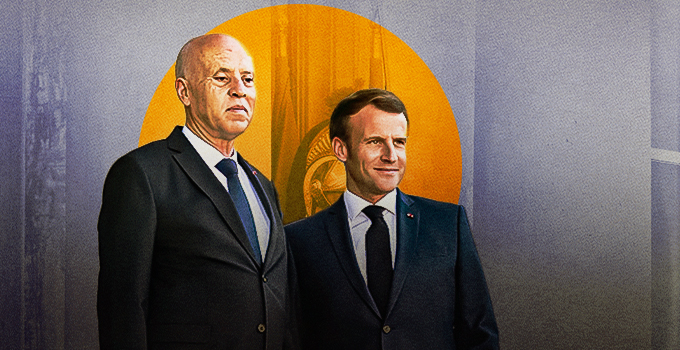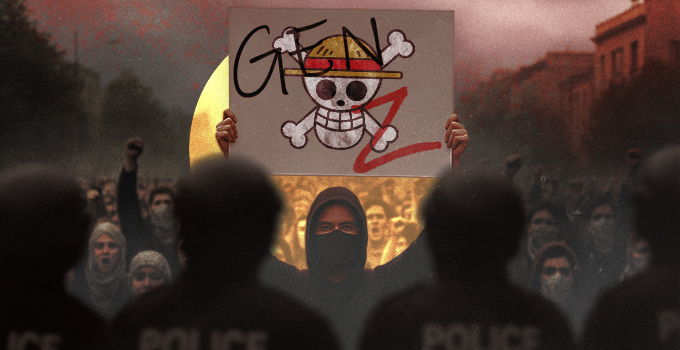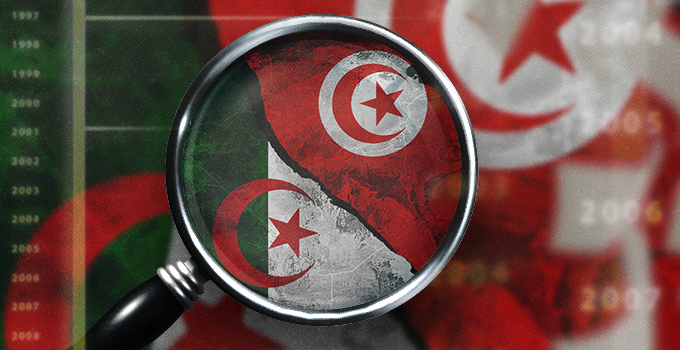Beginning in February 1939, nearly half a million Spanish Republicans were forced to leave their country following the victory of General Franco, ally of Hitler and Mussolini, in the country’s civil war. During this mass exodus known as the Retirada, hundreds of Spanish Marine officers docked in Bizerte, Tunisia, between May 1939 and June 1940. These refugees ended up in work camps, particularly in the foothills of Mount Chaambi in Kasserine. Despite hunger and illness, most of them remained in the city for 17 years, from 1939 to 1956, while still others remained until the early 1980’s. Only about 20 of them died there, between July 1941 and October 1949, and were buried in a cemetery that has long since been forgotten. Today, at the end of a narrow passageway in Kasserine, their story has finally been unearthed.
Tucked away in the foothills of Tunisia’s northwest region of Kasserine, the cemetery of Spanish Republicans has withstood the vicissitudes of history. Despite conclusions drawn by several studies on the diaspora of Spanish Loyalists in North Africa and Tunisia in particular, the cemetery has not disappeared. It remains, carefully hidden, in the heart of Kasserine. Buildings erected over time encircle the site, as if in a final embrace to guard it from plain view without blotting it out. Traces of the Spanish refugees remain, including this house which has not changed in 60 years. The railway station and public works factory are also a testament to their fleeting existence in the city.
Childhood memories and historical research
Children play beneath an unrelenting sun. The eldest among them proposes an adventure into the tangle of city streets. At the end of this maze, a passageway, then a gate which opens into the unknown. The children’s audacity melts away as they catch their breath beneath the shade of a scrawny tree. One of them decides to take a few steps further. He sees it, or at least catches a glimpse just as an adult voice warns the children to “go home!” They turn on their heels and take off without looking back.

I returned thirty years later, accompanied by directors Marc Almodovar and Andreu Rosés to film a documentary[1] for a research project entitled “Arab youth as political actors”. We arrived in Kasserine on the morning of Saturday, June 23, 2018, and found a table at a café called “Coin vert” in the Hay Ezzouhour neighborhood. The place felt familiar. Images resurfaced in my mind, like signs showing the way forward. As I collected my memories and observed the city, I sensed I was close to solving the mystery. Yes, it was there—at the end of a passageway, concealed behind a few walls.
I asked my companions if they wanted to visit a “cemetery of Republicans” just a few dozen meters from the café. They were stunned. A cemetery of Spanish Republicans in Kasserine, having survived so many decades without any record or mention in books or newspapers? A cemetery never sought out by the family members of those buried beneath its tombstones? Nobody believed it, neither in Tunisia, nor in Spain.

But I am from Kasserine, and a professor of contemporary history. My companions knew this, and did not think twice before accepting my invitation to rediscover the forgotten cemetery.
The railway station and tracks which traverse Kasserine once formed the heart of the city. From an urban and logistical perspective, the railway station represents a foundational aspect of the area, as if it were a forum or mosque or market. As the cornerstone of the colonial city of Kasserine, the station was the perfect starting point in our search.
We crossed the street, and then the railway tracks. Car and foot traffic were dense, and my memory was foggy. Which neighborhood was the cemetery in? We decided not to ask anybody in order to avoid drawing any attention and thereby potential problems. The city’s residents, much like local police, were on edge.
The ruins of the railway station were several dozen meters to our left. We continued along a lane bordered with Mediterranean cypress until we arrived in front of the station. A long street stretched out before us, separating two blocks of houses. Between the old wall, built during the colonial period, and the more recent structures, the contrast was striking. We walked to the end of the street. After barely 150 meters, we arrived at a small crossing which led to an avenue at the entrance of the Al-Nour neighborhood. There we stopped for a moment. I was sure that we were very close, though not quite there.
According to different sources and testimonies gathered from residents, a large public works factory once operated across from the railway station. This old, imposing wall must have belonged to the factory. But I needed to be certain of this preliminary information. The place was empty except for an elderly man who was eying us. He must have been at least 70 years old, meaning that he would have been born in the 1940’s and very likely would have known the Spanish Republicans.
After greeting the man, I asked him about these old structures and the name of this place. He looked us over, as if expecting a more important question. “It’s the factory,” he finally replied. “And what is the name of the neighborhood?” I asked. “Cemetery neighborhood,” the old man responded.
For a moment I was silent. My companions questioned me about what our aged interlocutor had said. I told them, and they exchanged a few words. The man immediately knew which language they were speaking.
“You have indeed arrived. They are resting in the shade,” he announced, his eyes turned towards the sky.
SYMBOLIC TREE
A cypress tree more than 20 meters high towered before me. Its trunk seemed to plunge downwards into the surrounding buildings. It must be growing in somebody’s garden, or else in the cemetery itself, I thought. I recalled a course on funerary symbols offered by the professor of ancient history Ahmed M’Charek. In Greek and Roman culture, the cypress tree is associated with death and grieving. This one, however, appeared isolated. Could it be the lone survivor?

Searching for a way through, we entered into a short, narrow passage which took us to a small house. I stepped forward and, without hesitating, knocked on the door.
A young man opened and then called to his mother. The woman, some fifty years old, had light skin and tired eyes.
“My name is Malek, I am originally from Thala. These are my friends,” I said in an effort to reassure the woman. “We would like to see the cemetery,” I admitted, silently fearing that I had spoken too hastily.

A few instants later, however, she agreed. She turned to call her son, and finally came out herself, motioning for us to follow her towards the cemetery. At the angle of the house was a passage less than five meters long, at the end of which was an old iron gate. We had not noticed it upon our arrival. The woman asked us to allow her son to go in first so that he could calm the dog that was guarding the cemetery.
“Wait a bit. Vandals used to come poking around and would spend their evenings here. We tried to hide the entrance, put up a gate and got a dog to guard the area,” she explained. I turned towards Marc and Andreu. We must have arrived at the cemetery of Spanish refugees. In just a few moments, we would be sure.
Kasserine’s many mausoleums and tombs—not to mention the thousands-of-years-old vestiges of Numidian, Roman, Byzantine and other Vandal cultures—bear witness to the city’s tumultuous history. Traces left by the Germans, Americans and English date back to the Second World War.
The name Kasserine (which literally means “two castles” in Arabic) itself derives from the Flavii and Petronii mausoleums of the ancient city of Cillium. It is perhaps one of history’s ironies that it was a Spanish orientalist, Francisco Ximenez, who most contributed to uncovering Kasserine’s past in the beginning of the 18th century, and even predicted the region’s return to prosperity.
The young man held onto the dog as his mother opened the gate. We entered slowly, and found ourselves standing inside a court some thirty by fifteen meters across, at the center of which grew a cypress. High walls enclosed the space.
My friends noted that the names inscribed on the tombstones were indeed Spanish: Antonio Sánchez, Ambrosio Martínez, Jose Bravo…
Marc nodded to me. Within a few seconds, the story of these refugees unfolded before my eyes. Had I really relocated the cemetery with so little trouble? A sense of guilt that I had not returned earlier washed over me. But everything in its own time.
I imagined the solemn funerals and eulogies. The farewells honoring fellow soldiers, sea mates, those who had been part of the resistance, endured exile, and faced oblivion. A light breeze stirred the branches of the cypress, softening the intensity of the June sun overhead. The woman noticed that I was troubled. “My son, tell me what is the matter?” I answered her with a question: “Do you know where these men came from?”
“No,” the woman replied. Some say that they are Jews. Others say Italians. Still others affirm that they are victims of war from different places. Tell me, who are they (pointing to the tombs)? And who are they (pointing to Marc and Andreu)?”
These men lived here, mixed with people and left their imprint. And yet, the Kasserinians that I have met, whether professors, lawyers or students, were all surprised when I evoked this history. They were born and raised in Kasserine but do not know that the reconstruction of their city was also by the hands of these Spanish refugees who have disappeared from the radar of local history.
“The dead buried here are Spanish men. And my friends are also Spanish. The tree may be Italian, and the wall may be French. But these are Spanish Marine officers,” I told the woman.
My companions took the first photos of the cemetery and its tombs. Were they happy for the discovery, or sad in the presence of death? Feelings were mixed. The solemnity of the place imposed respect and silence as we explored the cemetery over the course of an hour.

The cemetery holds twenty or so gray cement tombs standing 2 to 3 inches above the earth. Some of them have been desecrated. But all tombstones bear the Latin cross above the inscription RIP, below which is engraved the complete name of the deceased and the date of his death. Some names and dates are completely gone. Others are no longer legible. We were able to record only 12 names: Francisco Puig Suárez, Francois Ficher, Antonio Sánchez Serna, Fernando Sánchez Idez, Eligio Casal, Antonio Álvarez San Pedro, Antonio Rodríguez Fernandez, Marcelino Llano Cotrofe, Ambrosio Martínez, José Bravo Collazo, Antonio Bouza Martínez and Fernando Fuilla. The information available indicates that these men died in the 1940s, between July 1941 and October 1949.
THEIR LIFE IN KASSERINE
The first contingent of Spanish refugees arrived in Kasserine in the beginning of May 1939 to work in a village at the foot of Mount Chaambi. The group endured months of hardship due to lack of shelter, food and clothing. Sanitary conditions were deplorable. According to some sources and testimonies, the refugees were forced to sleep in caves on the banks of Oued al-Darb.
In fact, they were no better off than Kasserinians themselves. The 1930s were particularly difficult years for the region and Tunisia at large. After 50 years of colonial occupation, local tribes were forced to abandon their ways of life and subsistence. The result was disastrous. The population was impoverished. Across the region, residents were reduced to the status of agricultural laborers on their own lands, as the extraction of natural resources and raw materials accelerated. The situation further deteriorated after the economic crisis of 1929-1932 and successive years of drought. Tunisians—particularly in the country’s interior regions—experienced cold and hunger. Statistics indicate that there were thousands of deaths caused by epidemics of typhus, smallpox, and malaria. The first refugees were not spared. French colonial archives report that “3 Spaniards died from Typhus in July 1941, in spite of medical aid provided by the doctor responsible for the healthcare of Kasserine’s Spanish community.”

One of the three, Antonio Bouza Martínez, was buried in this cemetery. He and his two companions may have been the first to occupy the site. Overall, the cemetery’s construction seems to have taken place under the pressure of time, without prior planning. Its location—just behind the factory, as if it were a direct extension of the latter—is characteristic of its singularity. In 1941, none of the refugees would have dreamed of dying from illness or building a new cemetery. These were young men set on their own survival, attached to life and intent on returning home. Throughout the 1940s, however, this did not prevent them from honoring the memory of camarades lost along the way.
Two of them, Officers Antonio and Fernandez Fondo, were buried in this cemetery. They are among the eight refugees whose names have been erased from their tombstones.
Efforts by residents of the neighborhood to block access to the cemetery, their ignorance about those buried within and their countries of origin, seem understandable. The amnesia demonstrated by regional authorities, ministries and official institutions is, by contrast, astonishing. For indeed, these individuals who resisted fascism under General Franco and came to seek refuge in Tunisia are also a part of our country’s history.
[1] The project carried out between 2016-2018 included five Arab countries (Algeria, Tunisia, Egypt, Lebanon and Syria). It was based on field research. It resulted in a documentary film directed by Marc Almodovar and Andreu Rosés entitled “They Persist: Arab Youth Reinventing Politics”.





iThere are no comments
Add yours